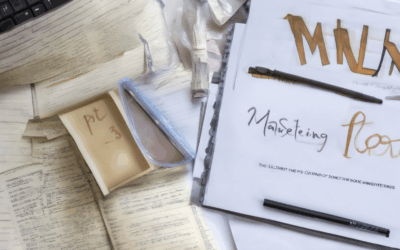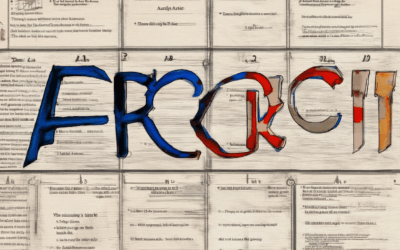Understanding the narrative perspective in fiction is a cornerstone of literary analysis, offering insights into how authors construct stories and engage readers. Whether through first-person narratives, omniscient viewpoints, or limited perspectives, the narrative perspective significantly influences tone, style, and plot development. This essential element of fiction not only shapes how stories are told but also impacts how audiences connect with the characters and the world they inhabit. From classic novels to modern films, the choice of narrative perspective plays a pivotal role in both stylistics and structure, making it a fascinating topic for exploration. In this article, we delve into the intricacies of narrative perspective, examining its definition, significance, and application across various genres and mediums.
Key Takeaways
– Third Person Dominance: The third-person perspective is the most common in fiction, balancing intimacy and objectivity.
– POV Variations: Includes Third Person Limited (deep character insight) and Third Person Omniscient (panoramic view), with First and Second Person used for personal narratives.
– Harry Potter Insight: Utilizes third-person omniscient to explore multiple characters’ thoughts, enhancing immersion.
– Narrative Elements: Stories thrive on Character, Objective, Obstacle, and Theme, each driving plot and depth.

What is Narrative Perspective in Fiction?
The narrative perspective, often referred to as the point of view, is the vantage point from which a story is told. It determines how readers perceive events, characters, and the overall tone of the narrative. Understanding the narrative perspective helps authors connect with their audience and convey their intended themes effectively.
There are several common types of narrative perspectives:
- First-Person Perspective : The story is narrated by a single character, offering a personal and intimate view of the events. This perspective creates a deep connection between the reader and the protagonist, allowing for a subjective storytelling experience.
- Second-Person Perspective : Less common, this perspective uses verbs in the present tense to involve the reader directly, as if they are the main character. This technique can be disorienting but can also enhance immersion.
- Third-Person Limited Perspective : The story is told from the viewpoint of a specific character or group of characters, providing a balanced view of the narrative while still allowing for characterization and plot development.
- Third-Person Omniscient Perspective : The narrator has complete knowledge of all characters and events, allowing for a broad overview of the story. This perspective offers maximum flexibility in storytelling but requires careful handling to avoid overwhelming the reader.
The choice of narrative perspective significantly impacts the reader’s experience. First-person narratives can accelerate the pace and deepen emotional connections, while third-person perspectives provide a wider lens through which to view the story. Third-person omniscient narratives, on the other hand, allow for sweeping storytelling but require skillful execution to maintain engagement.
By thoughtfully selecting the narrative perspective, authors can craft stories that resonate deeply with readers, whether through intimate character-driven tales or grand, sweeping sagas.
For further exploration of narrative techniques, visit James Whitfield Thomson to discover insights, writing tips, and in-depth analysis of storytelling methods.
How to Identify Narrative Perspective
The narrative perspective, also known as the point of view, determines how a story is told. Here’s a structured approach to identify it:
- Pronouns : Look for words like “I,” “me,” “my,” “we,” “us,” “they,” “he,” “she,” or “it.” These indicate the speaker’s perspective.
- First-Person : Uses “I” (e.g., “I ran fast”).
- Second-Person : Uses “you” (e.g., “You must try this”).
- Third-Person : Refers to characters without “I” (e.g., “He ran fast”).
- Sentence Structure :
- First-Person : Personal and intimate, often with “I” at the center.
- Second-Person : Direct and interactive, addressing the reader (“You”).
- Third-Person : Can vary. Omniscient (all-knowing) narrators reveal multiple perspectives, while limited third-person focuses on one character.
- Focalization :
- Consistency in what the narrator knows or describes is crucial.
- First-person narratives often limit knowledge to the protagonist’s experiences.
- Third-person narratives may shift focus but typically stay centered on specific characters.
- Examples :
- First-Person : “I climbed the mountain.”
- Second-Person : “You discovered the hidden treasure.”
- Third-Person (Omniscient) : “She felt excited, he was nervous.”
- Third-Person (Limited) : “John thought deeply, Mary smiled.”
By examining these elements, you can accurately determine the narrative perspective, enhancing your understanding of the story’s structure and purpose.

What Are the Perspectives in Fiction?
Fiction writing offers a variety of ways to tell a story through different perspectives, each offering unique insights and engagement. Here’s a breakdown of the primary approaches:
- First-Person Perspective: The story is told from the perspective of a single character, allowing readers to experience the world through their eyes. This creates intimacy and allows for deep exploration of the character’s thoughts and emotions. Examples include Raymond Carver’s “A Little Story About Big Triples” and F. Scott Fitzgerald’s “The Great Gatsby.”
- Second-Person Perspective: Less common, this perspective uses “you” as the reader, placing the narrative directly in the audience’s experience. It requires careful balance to avoid alienating readers, as seen in works like John Green’s “Looking for Alaska.”
- Third-Person Limited Perspective: The story shifts between different characters’ viewpoints, often focusing on one or a few characters at a time. This approach allows for broader storytelling while maintaining a close connection to individual characters. J.K. Rowling’s “Harry Potter” series is a masterful example of this technique.
- Third-Person Omniscient Perspective: The narrator knows everything about all characters and events, offering a sweeping view of the story. This perspective is often used for epic tales or complex narratives, such as David Mitchell’s “Cloud Atlas.”
Additionally, narrative voice plays a crucial role in shaping the reader’s experience. The voice can be subjective, objective, or even unreliable, adding layers of complexity to the story. An unreliable narrator, as seen in Bret Easton Ellis’s “American Psycho,” challenges readers’ trust in the narrative itself.
Understanding and experimenting with these perspectives is essential for writers to craft stories that resonate deeply with readers. Whether choosing a intimate first-person account or a grand third-person sweep, the choice of perspective fundamentally shapes the story’s tone, pacing, and emotional impact.

Most Common Point of View in Fictional Narratives
The most common point of view (POV) in fictional narratives is the **third person**. Third person perspective is, by far, the most widely used narrative voice in literature and storytelling.
Third person offers authors a balance between intimacy and objectivity, allowing readers to connect with characters while maintaining a certain distance. This perspective is highly versatile and can be employed in various ways:
- Third Person Limited: Focuses on the thoughts, feelings, and actions of a single character, providing deep insight into their psyche while still giving a broader view of the story.
- Third Person Omniscient: Allows the narrator to jump into the minds of multiple characters, offering a panoramic view of the narrative and its various subplots.
While third person is dominant, first person (the writer’s own voice) and second person (addressing the reader directly) are also commonly used, particularly in personal journals, confessional stories, or interactive narratives. Each choice of POV impacts the reader’s experience and the way the story unfolds.
For more insights into crafting compelling narratives, explore our resources on James Whitfield Thomson ‘s writing techniques and storytelling approaches.
Point of View in Harry Potter
The Harry Potter series is written from a third-person omniscient perspective, allowing the narrator to shift between different characters’ thoughts and experiences. This narrative style enables J.K. Rowling to explore the internal lives of multiple characters and provide insights into their motivations and emotions.
- Third-person omniscient narrative: The story is told from a broad perspective, allowing access to the thoughts and feelings of various characters, including Harry, his friends, and key figures like Dumbledore and Voldemort.
- Shifts in focus: While the default perspective is often aligned with Harry, the narrative occasionally steps into the minds of other characters, offering a wider view of the wizarding world and its complexities.
- Enhanced storytelling: This approach helps to deepen the audience’s connection to the characters and the magical universe, providing a more immersive reading experience.

The Four Basic Elements of a Fictional Narrative
A successful fictional narrative is built upon four fundamental elements that work together to create an engaging and memorable story. These elements are:
- Character
- Objective
- Obstacle
- Theme
1. Character
The backbone of any story is its characters. A well-developed character is relatable, multi-dimensional, and undergoes growth throughout the narrative. Protagonists can vary widely, ranging from traditional heroes to antiheroes. For example, in Star Wars: A New Hope , Luke Skywalker embarks on a journey to save the galaxy, while Katniss Everdeen in The Hunger Games fights against oppression. Characters are shaped by their flaws, strengths, and personal journeys, making them feel authentic to readers.
2. Objective
The objective is the central goal the protagonist aims to achieve. This goal can be simple, like retrieving a lost item, or complex, like searching for meaning in life. In The Lord of the Rings , Frodo Baggins’ objective is to destroy the One Ring, while Harry Potter’s objective evolves from discovering his magical heritage to confronting dark forces. An effective objective should align with the protagonist’s personality and drive the story forward.
3. Obstacle
Obstacles are challenges that the protagonist faces en route to achieving their objective. These can be external, such as natural disasters or opposing forces, or internal, such as fear or self-doubt. In Dumb and Dumber , two mentally challenged men face numerous comedic obstacles as they attempt to save the world. Obstacles test the protagonist’s resolve and often lead to character development.
4. Theme
The theme is the underlying message or idea that permeates the story. It often reflects human experiences or universal truths. For example, The Wizard of Oz explores the theme “Be yourself,” while Harry Potter conveys “Good triumphs over evil.” Themes are usually revealed through the characters’ actions, dialogues, and the narrative arc, giving the story emotional resonance.
Conclusion
Understanding and masterfully applying these four elements is essential for crafting a compelling narrative. By developing well-rounded characters, setting clear objectives, overcoming meaningful obstacles, and infusing a strong theme, authors can create stories that captivate audiences and leave a lasting impact.





0 Comments